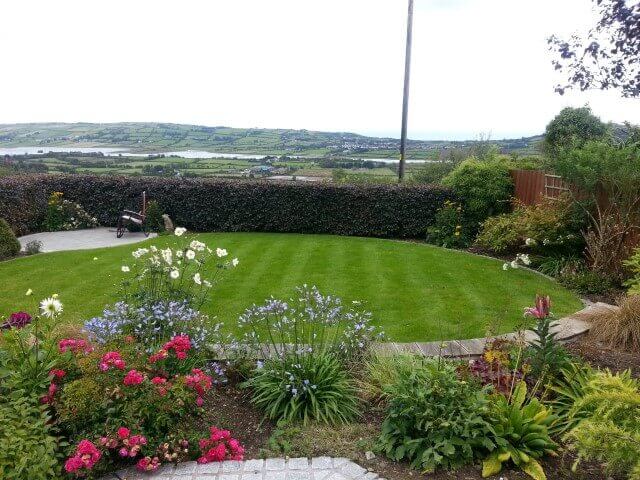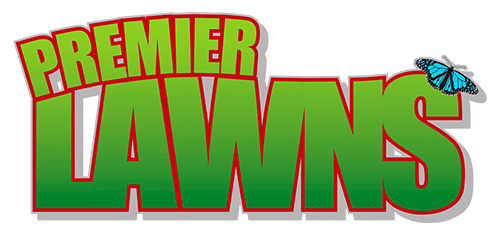It’s great to have manicured lawns and neat hedges in a garden but somehow for me, it’s the sight and sound of butterflies and bees that really make summer special.
Two sounds remind me of summer more than anything else. The gentle hum of the lawnmower and the buzzing of happy bees foraging in the flower beds. Add in the occasional glimpse of a butterfly fluttering by and I’m one happy lawncare professional.

In the last 50 years or so we’ve lost much of our wildlife habitat to intensive farming and housing developments. That means that butterflies and bees are nowhere near as common as they were when I was a boy. However, I’d like to think that we gardeners can do something to redress the balance without making our gardens look like a farmer’s field.
- Choose flowering plants where nectar and pollen is easy to access
- Aim to have a succession of blooms from early spring right through until late autumn
- Go for Planting styles and colour schemes that YOU like. Butterflies and bees see UV light, not colours.
- Visit gardens to seek inspiration and ideas
- Provide a source of water for butterflies and bees
- Don’t forget to plant food plants for caterpillars – they will be the next generation of butterflies
- Immaculate lawns mean that your garden will look good whatever the plants are doing. Plus you’ll have somewhere for wildlife watching
- A well-trimmed hedge shelters your garden and creates a warm microclimate where butterflies and bees can flourish.
What attracts butterflies and bees to a garden?
Short of setting up a beehive in your back garden – which I’m told is a fascinating hobby – there’s an awful lot you can do to encourage butterflies and bees to your garden.
Living creatures need 3 things. Water, food and shelter. If you can provide at least one of those, the creatures will come.
All living things need water
Butterflies and bees do need to drink but you don’t need to create a pond – although ponds are great for wildlife. Instead, a shallow tray filled with marbles and topped up with water is a simple and pretty way to provide water for bees. Bees can’t swim, so however you decide to provide water, make sure they can perch safely while they drink.
This bee drinker is designed to sit inside a hive but could easily be adapted for garden use.
Food for adult butterflies and bees
Plant nectar rich flowers
Beautiful flowers are what gardens are all about. Maybe you have flower borders or perhaps you prefer to keep a couple of planters on the patio. For butterflies and bees it’s about quality, not quantity.
Flowers should have easy access to the pollen and nectar. Each flower should be the insect equivalent of an open all hours café with great signage, easy parking and wide doors. Not a tucked away restaurant with an entrance way that’s only just big enough for a leprechaun.
Double flowers like some dahlias and most hybrid tea roses are just not accessible to butterflies and bees. If you can, introduce some plants with wide open blooms. Sedums are great, as are asters, buddleia and lavender.

Grow a wildflower patch
For centuries butterflies, bees and wildflowers have evolved together. The creatures time their egg laying to when the flowers will be blooming. The flowers have devised all sorts of ways to entice pollinators to do their thing.
A small wildflower patch can be a real asset to butterflies and bees. If you like bright colours, choose cornfield annuals. Want less work? Go for a mini-meadow of native perennials. Use the structural features of your garden – the lawns and the hedges to keep the space looking manicured and loved.

Provide food for caterpillars
Without caterpillars there would be no butterflies (or moths). I can understand that no one wants their prize plants chewed up but there are ways to avoid it.
Most caterpillars are fussy eaters. So plant some of their favourite food plants somewhere out of the way. Either in amongst dense planting in a border or as part of a wildflower mini-meadow. A patch of stinging nettles behind the compost bins will be almost invisible to you but will provide valuable food for the caterpillars of the peacock butterfly.
Nesting sites for bees
Honey bees live in hives or in tree trunks but bumblebees like to nest in the ground. Queen bumblebees hibernate in little holes. They like to be at the base of a hedge for frost protection and favour a north facing site. North facing means that the soil isn’t warm enough to wake them until there are enough flowers open to feed on. Leaving a good covering of leaves at the base of your hedge will be enormously helpful to the bees and if you happen to have some nesting in your garden, consider it a privilege.
Solitary bees are a little different. They like to have tubes or straws to nest in. You can buy little homes for solitary bees that will be attractive to you too – or why not try your hand at making one? It’s a great activity for children!

How to make your own bee hotel
Where to look for garden design inspiration
A bee friendly garden needn’t be a semi-wild mess. It’s well worth paying a visit to local gardens to see how they support butterflies and bees.
One of my favourites is the Belfast Botanic Gardens. It’s a great place to take note of how garden design can work for all creatures – not just people.
As you walk around you’ll see which plants are attracting the bees and which ones you like best. Take photo’s so that you can identify them later. You’ll see how the butterflies and bees like formal planting just as much as they enjoy the more relaxed herbaceous borders. Neatly manicured lawns mean that whatever the planting style, the garden still looks loved. Even a wildflower meadow can look tidy if it has paths mown through it.
The other thing to take note of is the hedging. Hedges are not just for boundaries, they provide structure in a garden, create a backdrop for the flowers, look great in winter when the flowers are dormant and also create a sheltered microclimate where plants and creatures can thrive side by side.
Visit the Belfast Botanic Gardens
How to get your lawn looking amazing
